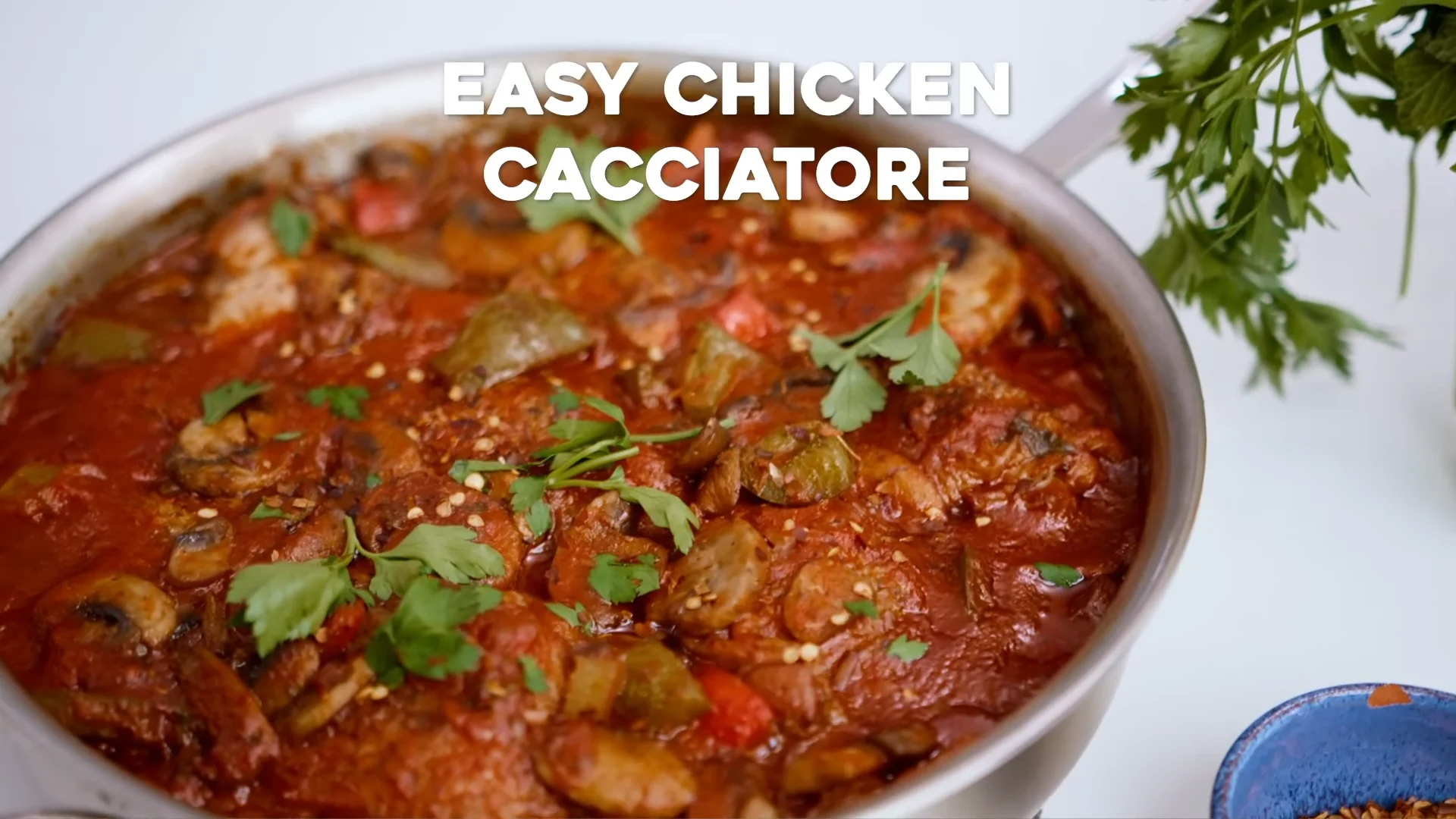Welcome to our kitchen, where the enticing aroma of Chicken Cacciatore wafts through the air. In this culinary adventure, we’re about to unravel the secrets of crafting the perfect, mouthwatering Chicken Cacciatore – a classic Italian dish that has stood the test of time.
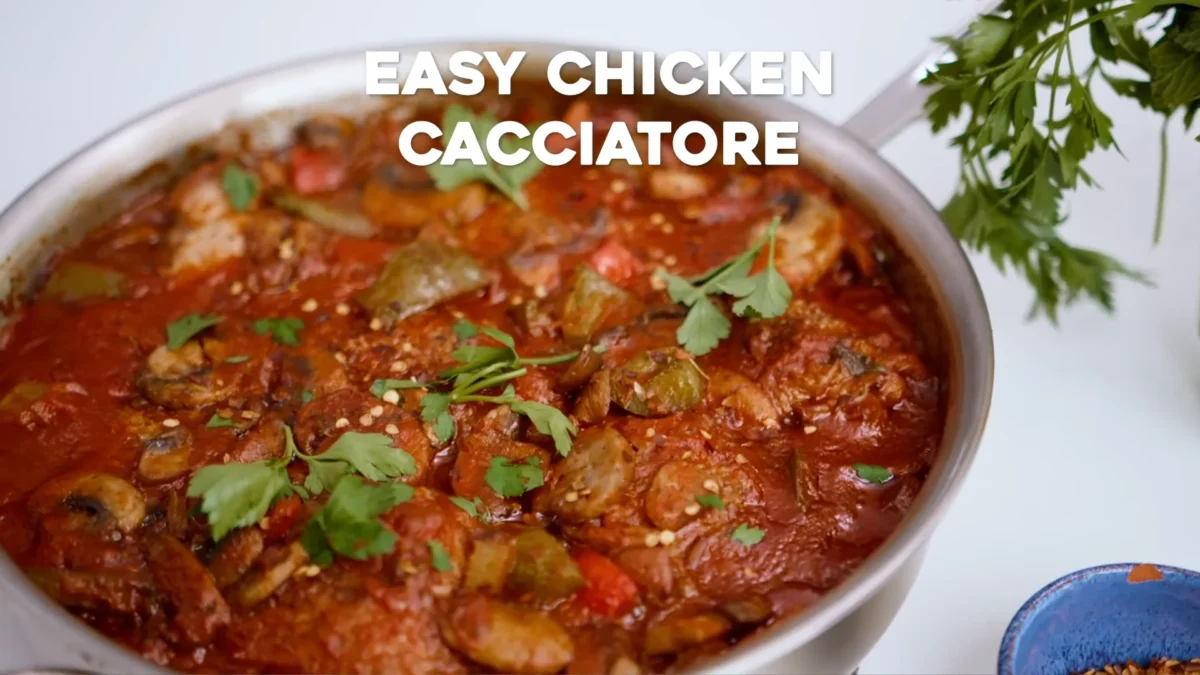
Table of Contents
What is chicken cacciatore?
“Cacciatore” is the Italian word for “hunter,” and when it comes to chicken cacciatore, we’re talking about a rustic, hunter-style braised chicken infused with the earthy goodness of onions, herbs, tomatoes, and sometimes a medley of chopped vegetables.
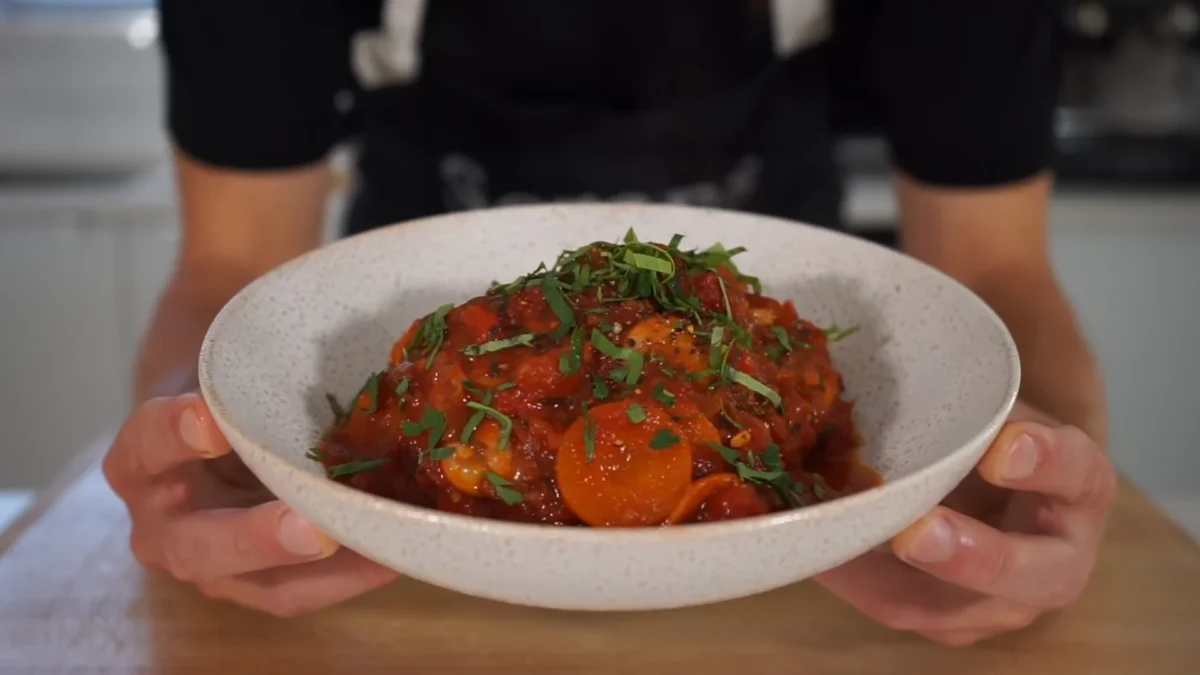
This dish is a cherished classic among my Italian-American friends, rooted in the tradition of hunter-style cooking. The beauty lies in its adaptability – almost every household has its unique version. Why? Because you’re encouraged to use whatever chicken (or rabbit), herbs, and other ingredients you have at your disposal, creating a comforting one-pot wonder.
Beyond the chicken, the essential elements in chicken cacciatore include onions, herbs, tomatoes, and sometimes mushrooms. Now, the variations start to dance in. Some recipes will toss in carrots and celery, while others opt for bell peppers or a mix of veggies. And here’s the twist – some aficionados even introduce anchovies to flavor the tomato sauce, a delightful touch I’m yet to explore.
It’s this flexibility that makes chicken cacciatore not just a recipe but a culinary canvas, inviting you to paint your own flavorful masterpiece in the comforting hues of home-cooked goodness.
Tools for this recipe
Recipe Video:
The Allure of Chicken Cacciatore
Chicken Cacciatore, or “hunter-style chicken,” is a dish deeply rooted in Italian tradition. What sets it apart is the harmonious blend of succulent chicken, vibrant tomatoes, aromatic herbs, and a medley of vegetables. This flavorful concoction has graced dinner tables for generations, offering a taste of rustic elegance.
Ingredients to Ignite the Flavor
- 4 bone-in, skin-on chicken thighs
- 4 bone-in, skin-on chicken drumsticks
- Salt and freshly ground black pepper to taste
- 1 cup all-purpose flour
- 2 tablespoons olive oil
- 1 large onion, finely chopped
- 4 cloves garlic, minced
- 1 cup bell peppers, sliced
- 1 cup mushrooms, sliced
- 1 can (28 ounces) crushed tomatoes
- 1 cup dry red wine
- 1 teaspoon dried oregano
- 1 teaspoon dried basil
- 1 teaspoon dried thyme
- 1 bay leaf
Crafting Culinary Excellence: Step by Step
Step 1: Preparing the Chicken
Season the chicken thighs and drumsticks generously with salt and freshly ground black pepper. Dredge the pieces in all-purpose flour, ensuring they are well coated.
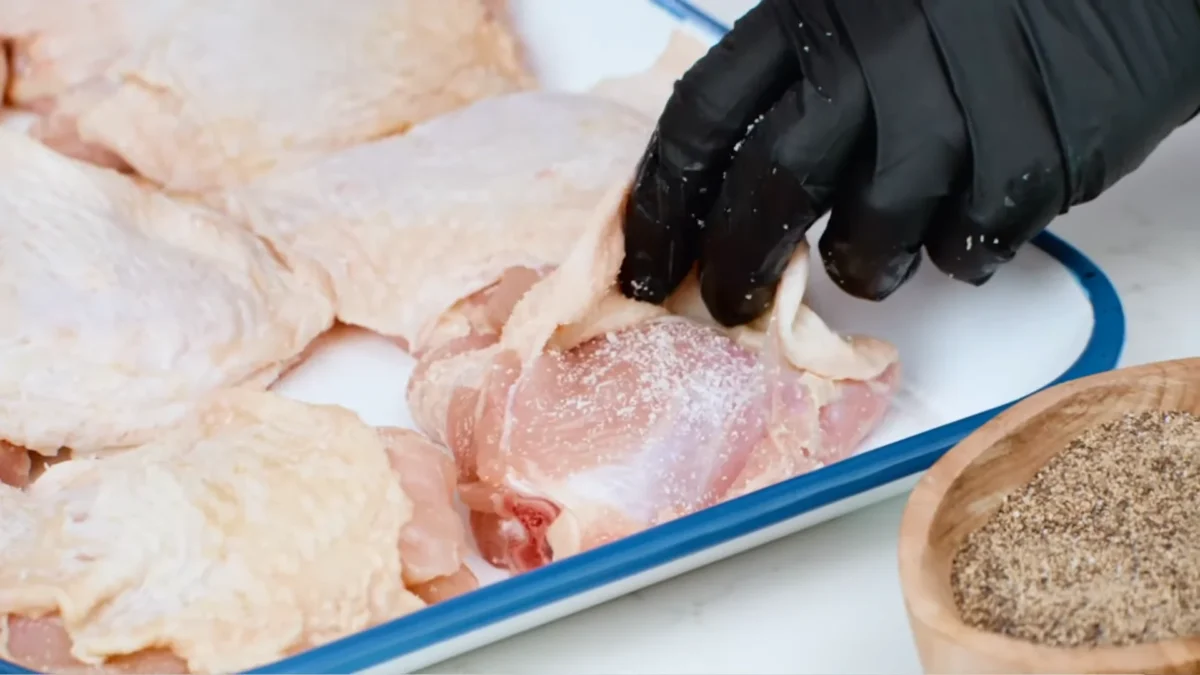
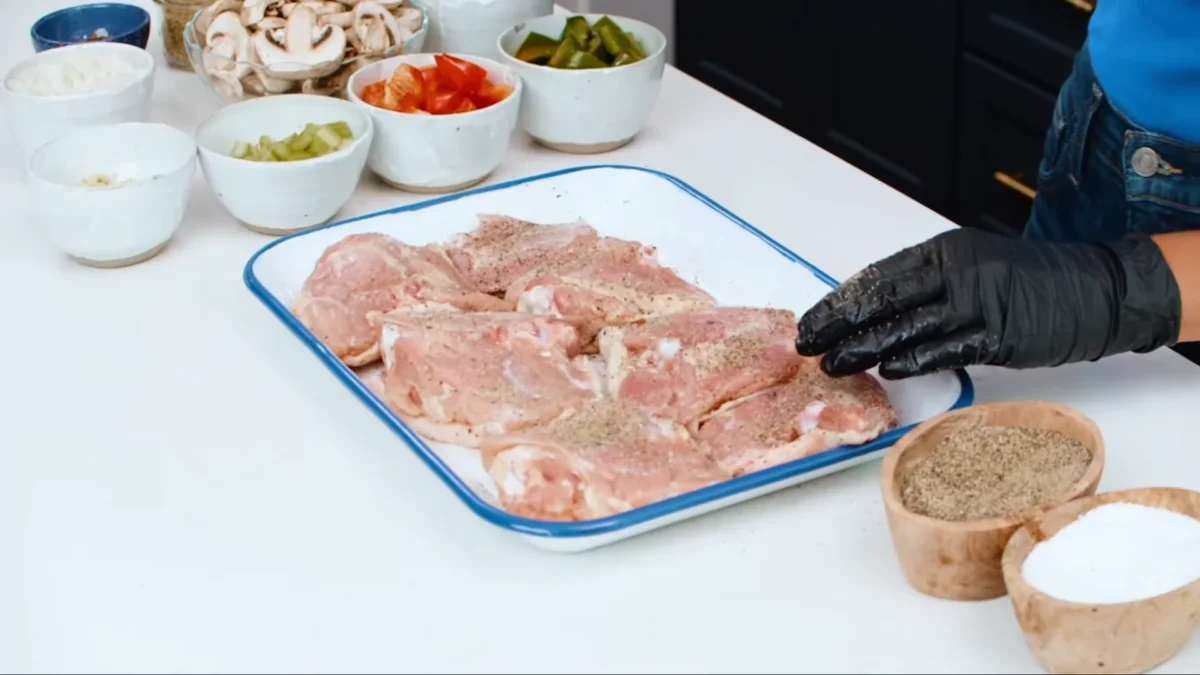
Step 2: Searing Perfection
In a large, sturdy pot, heat olive oil over medium-high heat. Sear the chicken until golden brown on all sides, creating a flavorful foundation for the dish.
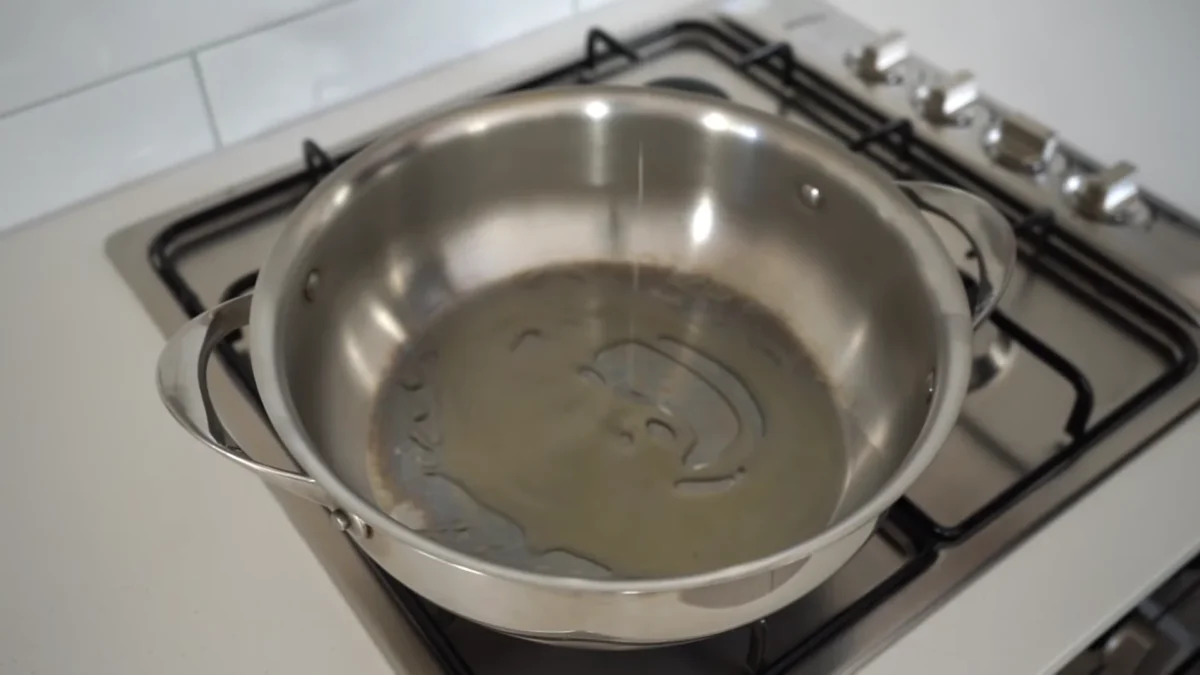
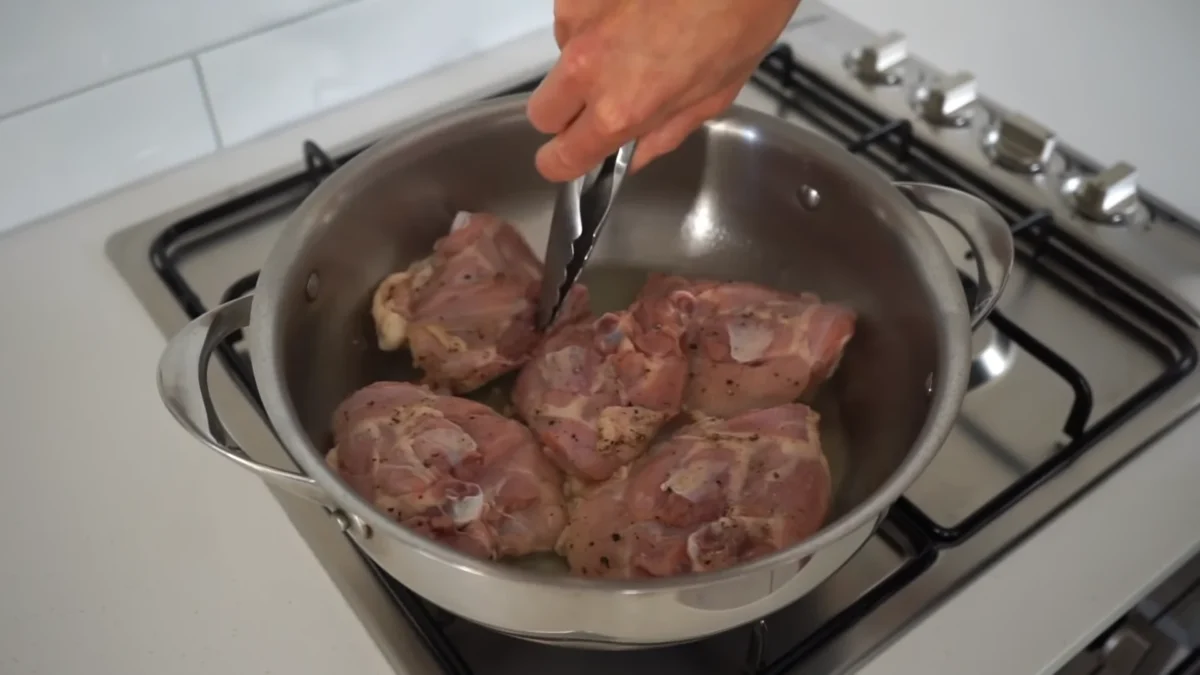
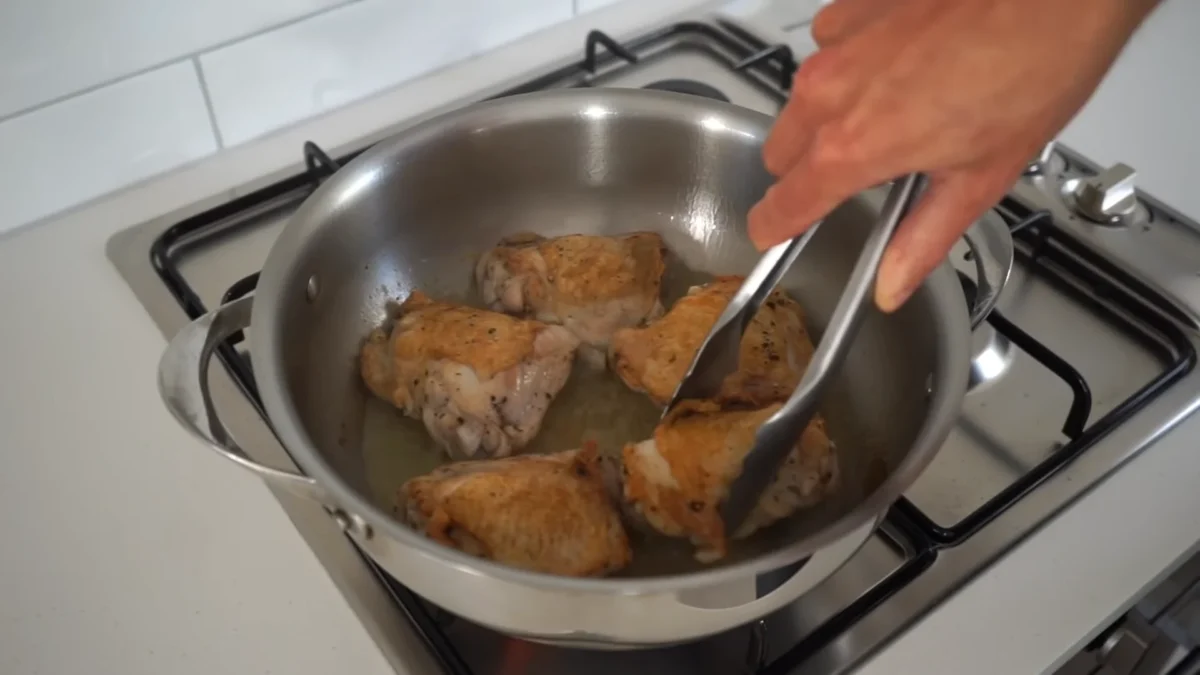
Step 3: Aromatics Unleashed
Add the finely chopped onion and minced garlic to the pot, sautéing until they become translucent and fragrant. This aromatic base sets the stage for an irresistible flavor profile.
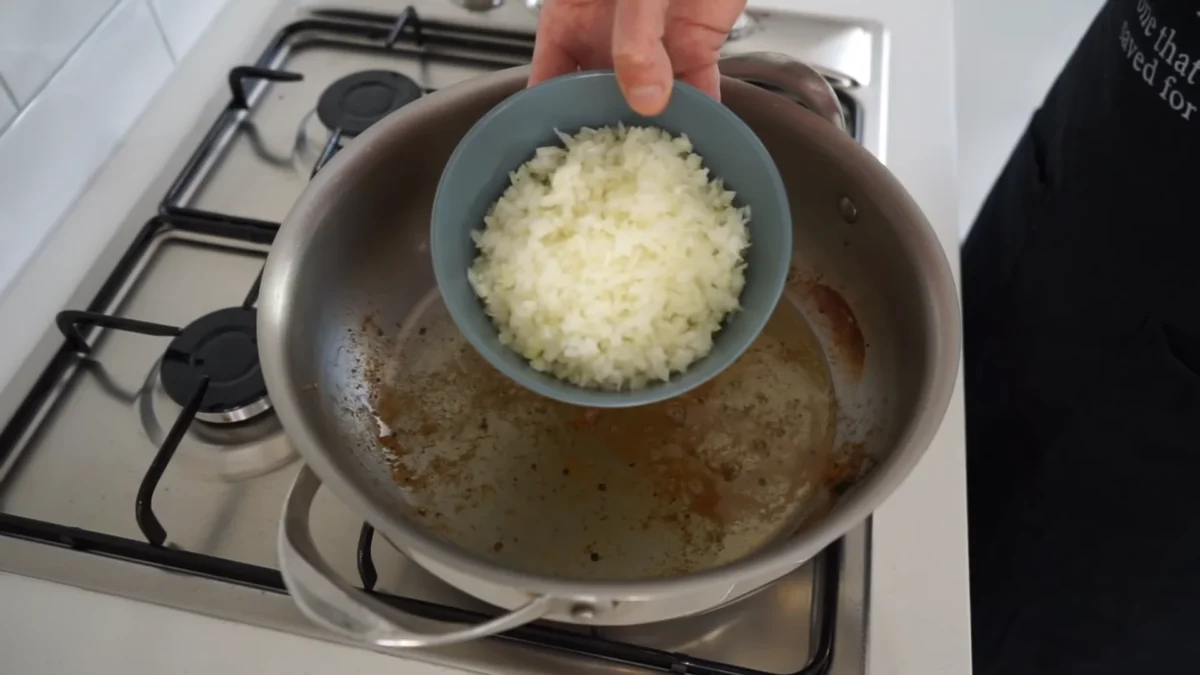
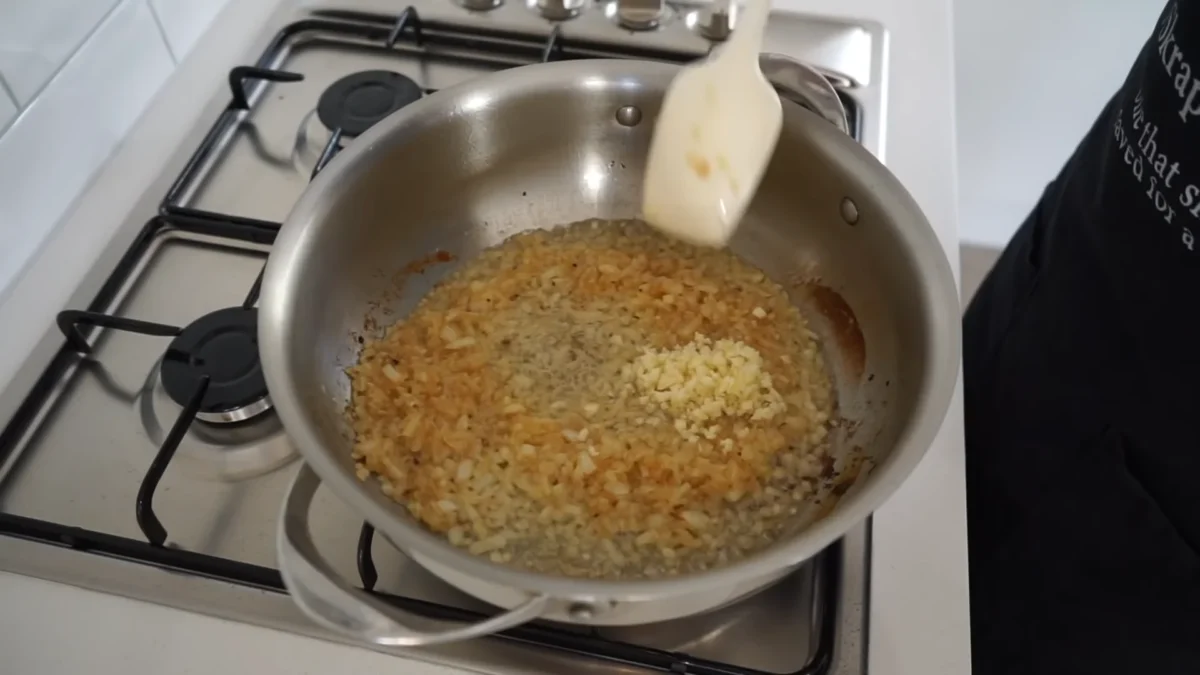
Step 4: Veggie Symphony
Introduce the sliced bell peppers and mushrooms to the pot, letting them mingle with the chicken and aromatics. This vegetable symphony adds depth and richness to the dish.
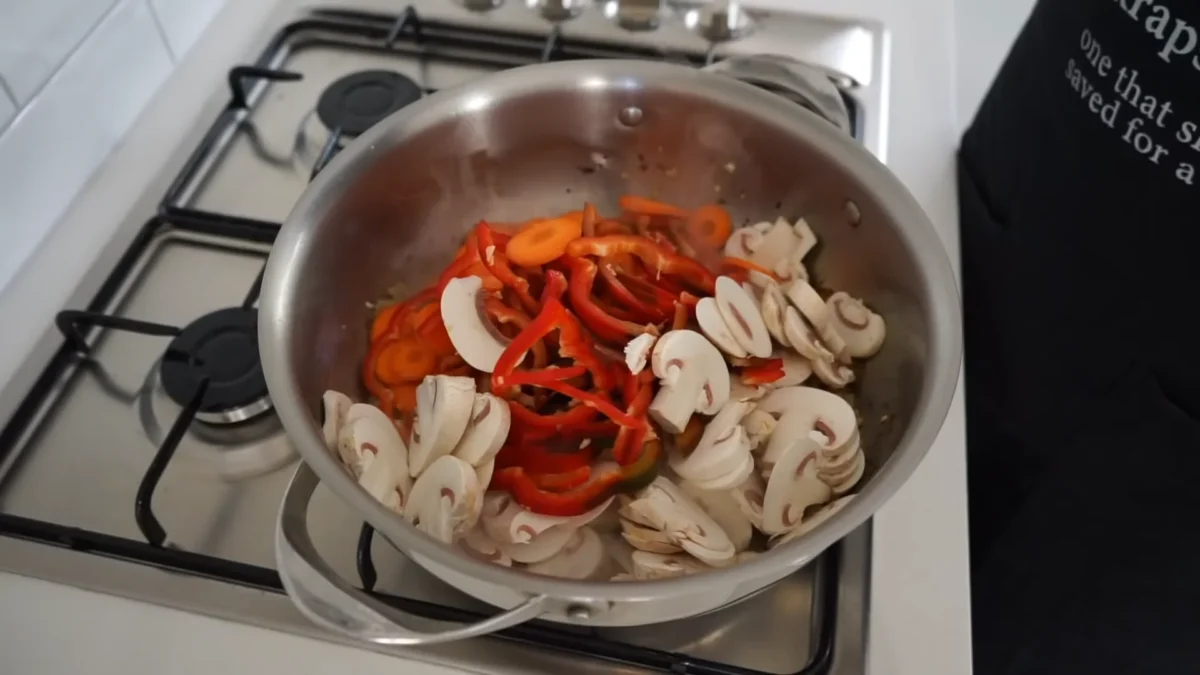
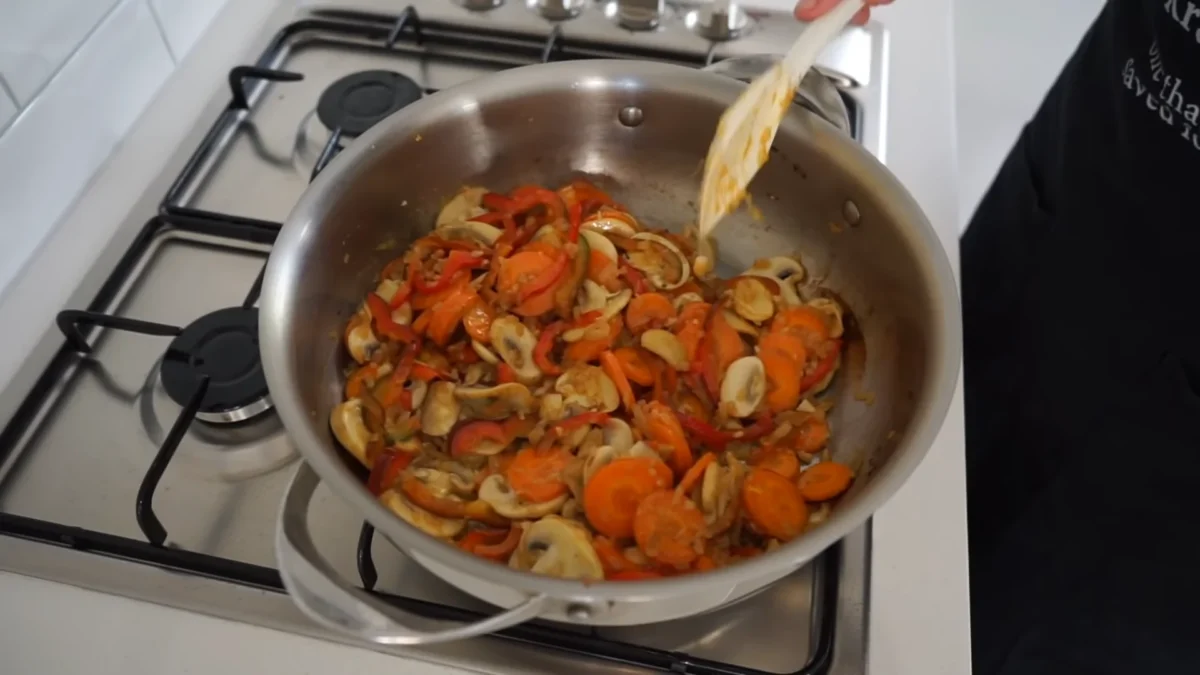
Step 5: Tomatoes and Wine Infusion
Pour in the can of crushed tomatoes and the dry red wine. Allow the ingredients to meld, creating a luscious sauce that bathes the chicken in savory goodness.
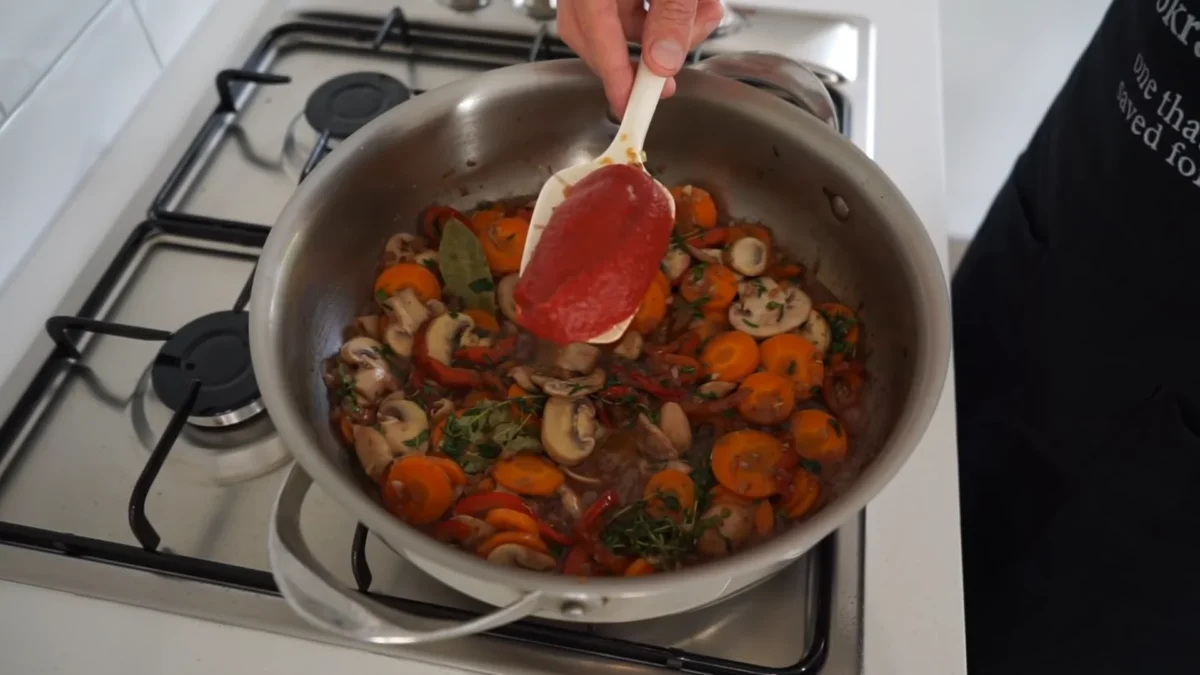
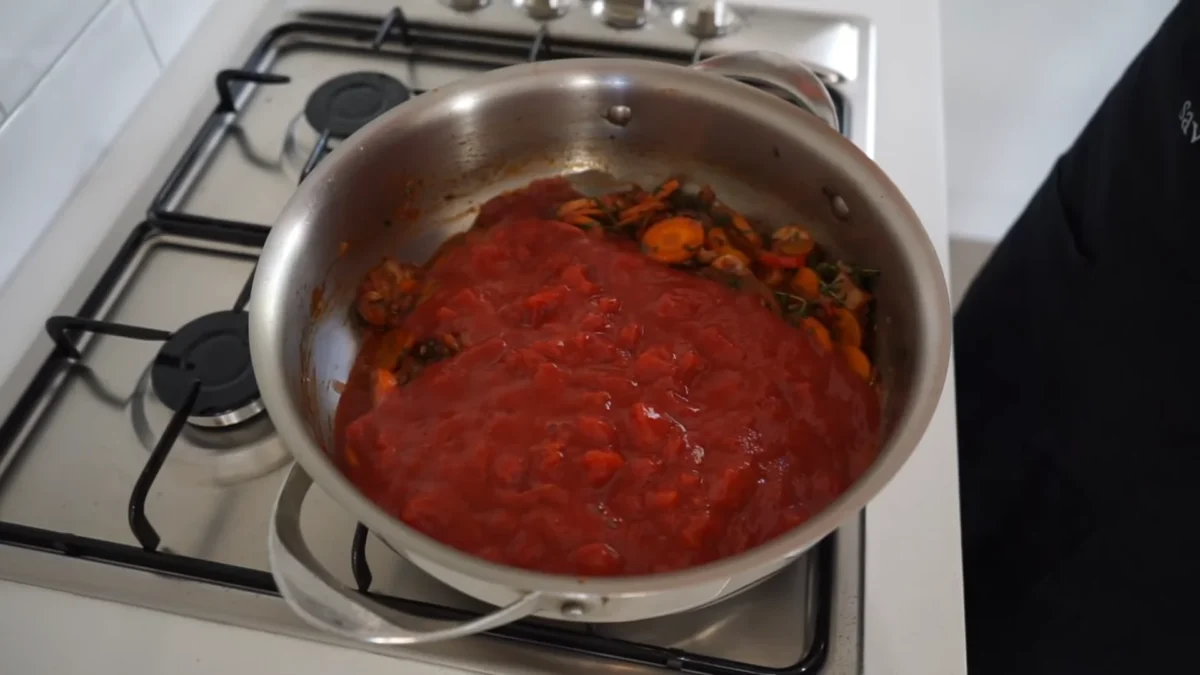
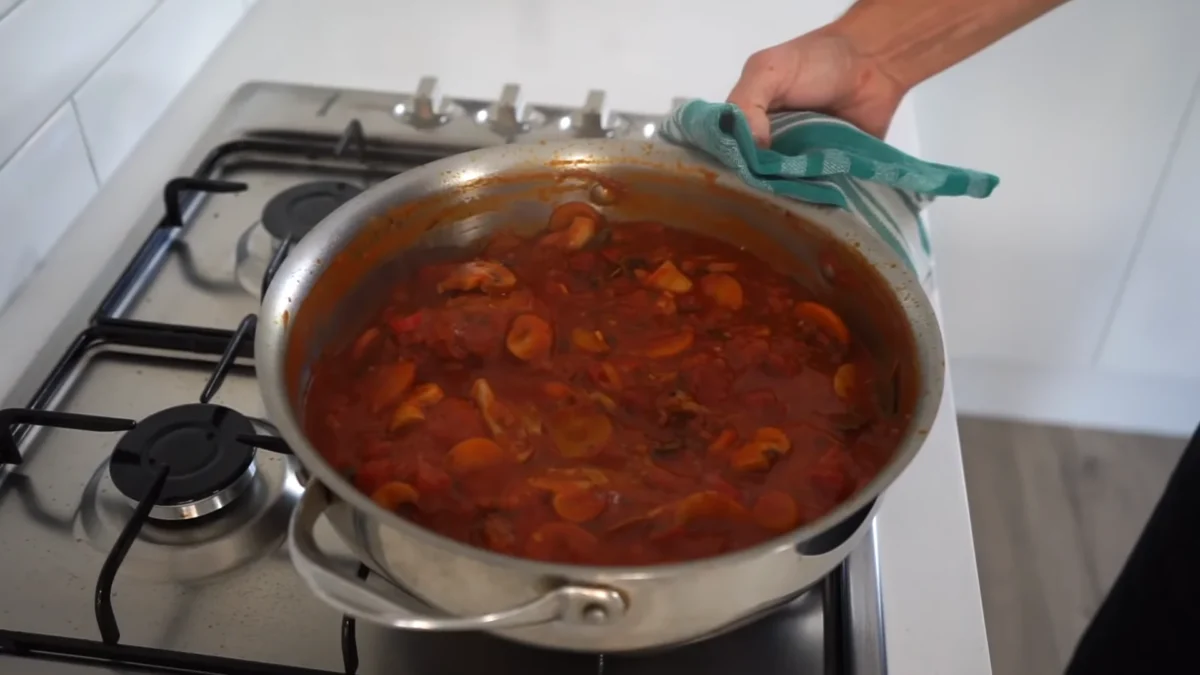
Step 6: Herb Elegance
Infuse the dish with the fragrant trio of dried oregano, dried basil, and dried thyme. Toss in a bay leaf for that extra touch of herbal elegance.
Step 7: Simmering Simplicity
Reduce the heat to a gentle simmer, covering the pot and letting the flavors marry. This slow-cooking method ensures that every ingredient contributes to the symphony of taste.
Step 8: Culmination of Flavors
After a patient wait, uncover the pot and revel in the aromatic crescendo. The chicken should be tender, and the sauce, a masterpiece of mingling tastes.
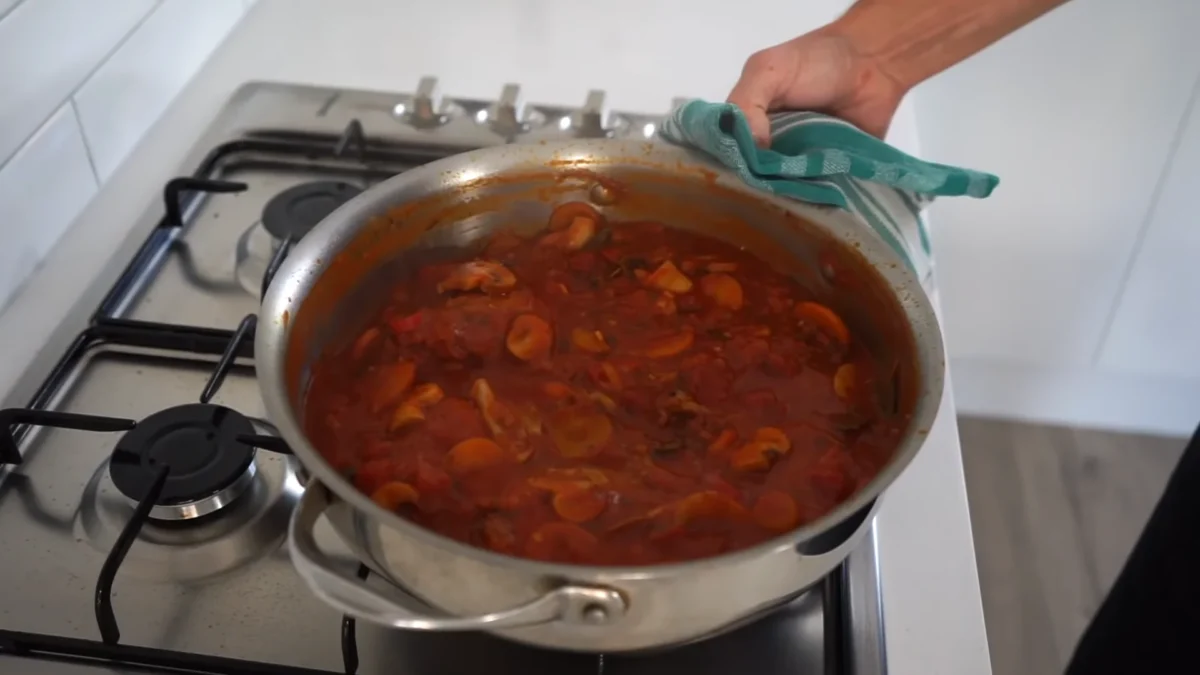
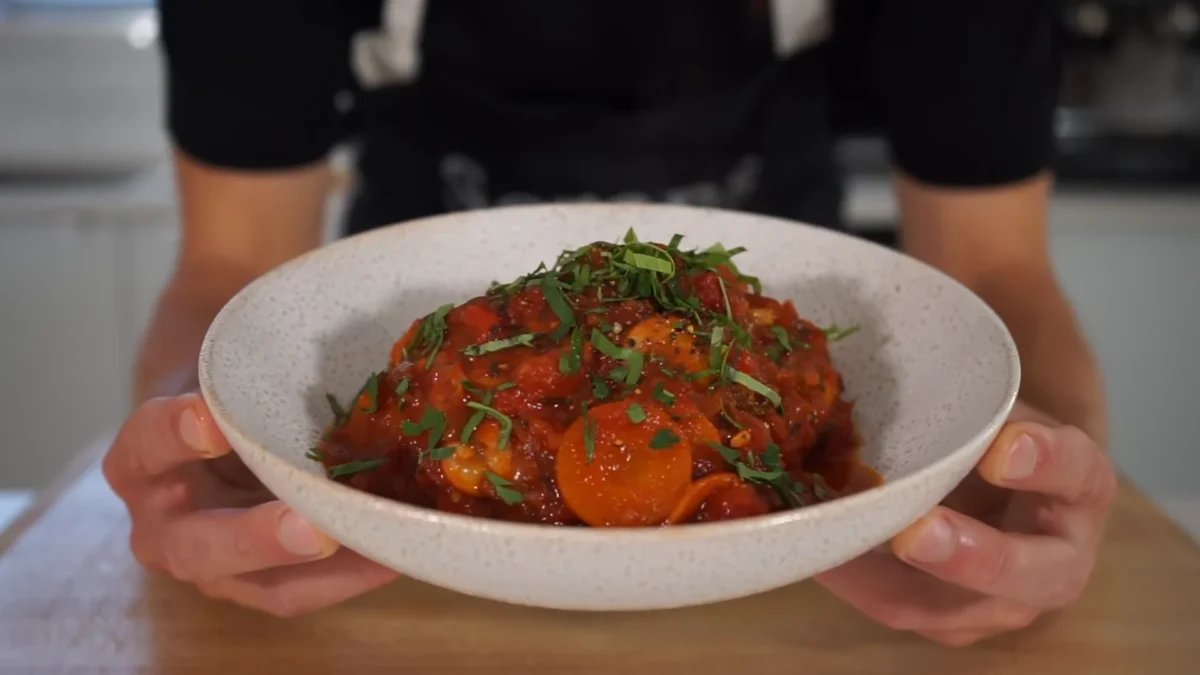
Chicken Cacciatore Nutrition Facts:
| Serving Size: | 1 serving |
| Amount Per Serving | % Daily Value |
| Calories | 480 |
| Total Fat | 28g |
| – Saturated Fat | 7g |
| – Trans Fat | 0g |
| Cholesterol | 135mg |
| Sodium | 720mg |
| Total Carbohydrates | 20g |
| – Dietary Fiber | 3g |
| – Sugars | 6g |
| Protein | 32g |
| Vitamin D | 2mcg |
| Calcium | 80mg |
| Iron | 5mg |
| Potassium | 950mg |
Key Nutrients in Chicken Cacciatore
- Protein: Chicken is an excellent source of lean protein, vital for muscle development and repair.
- Vitamins: Bell peppers contribute to the dish’s Vitamin A and C content, essential for immune health and vision.
- Minerals: The dish provides a good dose of calcium, important for bone health, and iron, crucial for oxygen transport in the body.
- Fiber: Ingredients like mushrooms and bell peppers add dietary fiber, promoting digestive health.
- Low Carbohydrates: With moderate carbohydrate content, Chicken Cacciatore fits well into balanced diets.
Health Benefits:
- High Protein Content: Chicken Cacciatore is rich in protein, essential for muscle repair and overall body function.
- Nutrient-Rich Vegetables: The dish incorporates a variety of vegetables like bell peppers and mushrooms, providing essential vitamins, minerals, and antioxidants.
- Heart-Healthy Ingredients: Olive oil, a staple in this recipe, contains monounsaturated fats that can contribute to heart health.
- Herb Infusion: The use of dried oregano, basil, and thyme not only adds flavor but also brings potential health benefits, as these herbs are known for their antioxidant and anti-inflammatory properties.
- Tomato Goodness: Tomatoes in the crushed form provide lycopene, an antioxidant linked to various health benefits, including reduced risk of certain diseases.
Storage Instructions:
- Refrigeration: Store leftover Chicken Cacciatore in an airtight container in the refrigerator within 2 hours of cooking.
- Freezing: For longer storage, the dish can be frozen. Let it cool down entirely before moving it to containers or bags suitable for freezing. Label with the date for reference.
- Storage Duration: Consume refrigerated leftovers within 3-4 days. Frozen Chicken Cacciatore can be enjoyed for up to 2-3 months.
Reheat and Reuse Instructions:
- Reheating: To reheat, place the desired portion in a saucepan or microwave. Heat thoroughly until the internal temperature reaches 165°F (74°C).
- Stovetop Method: Reheat gently on the stovetop, stirring occasionally to ensure even heating. If it seems a bit dry, just toss in a little water or broth to keep it nice and moist.
- Microwave Method: If using a microwave, cover the dish with a microwave-safe lid or microwave cover. Heat in intervals, stirring in between to promote uniform heating.
- Freshening Up: If the dish seems dry after reheating, consider adding a small amount of broth or water to restore moisture.
- Avoid Multiple Reheats: To maintain quality, try to avoid reheating the same portion multiple times. Instead, reheat in smaller portions as needed.
Enjoy the delightful flavors of Chicken Cacciatore, whether freshly made or reheated!
Conclusion:
Congratulations! You’ve mastered the art of crafting an authentic and delectable Chicken Cacciatore. This timeless dish is not just a meal; it’s a journey through the rich flavors of Italian tradition.
FAQ’s
Q. What is Chicken Cacciatore?
Chicken Cacciatore, or “hunter’s chicken,” is a classic Italian dish featuring chicken, tomatoes, onions, bell peppers, and herbs. The term “cacciatore” translates to “hunter” in Italian, highlighting the rustic charm of this hearty, home-cooked meal.
Q. Can I make Chicken Cacciatore in a slow cooker?
Absolutely, you can prepare Chicken Cacciatore in a slow cooker. To do this, brown the chicken first, then transfer it to the slow cooker. Add the rest of the ingredients and cook on low for 8 hours or on high for 4 hours. This method ensures the chicken is tender and the flavors meld together beautifully.
Q. What sides go well with Chicken Cacciatore?
Chicken Cacciatore pairs well with various sides such as spaghetti, egg noodles, polenta, mashed potatoes, or even zoodles (zucchini noodles). For a complete meal, serve it with a fresh garden salad and crusty garlic bread.
Q. How do you thicken Chicken Cacciatore sauce?
To thicken the sauce, you can add tomato paste or create a slurry with cornstarch or flour mixed with water. Tomato paste is preferred as it adds both thickness and richness. Start with a tablespoon and adjust to your desired consistency.
Q. What type of chicken is best for Chicken Cacciatore?
Bone-in, skinless chicken thighs are commonly used for Chicken Cacciatore because they remain tender and flavorful after cooking. You can also use a mix of chicken thighs and drumsticks. For a leaner option, chicken breasts can be used, but they might not be as juicy.
Q. How should I store and reheat leftovers?
Store leftover Chicken Cacciatore in an airtight container in the refrigerator for up to 4 days. You can also freeze it for up to three months. To reheat, bring it to room temperature and warm it in a skillet over low-medium heat or in an oven preheated to 350°F until heated through.

